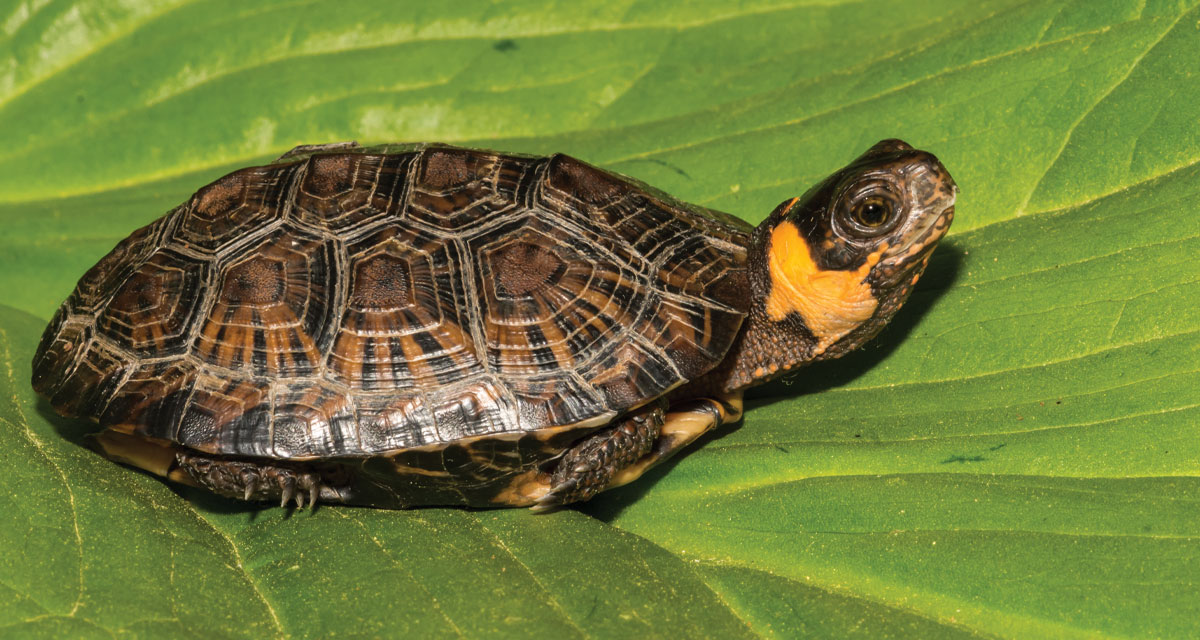The diversity of North Carolina’s three sub-biomes, namely the coastal plains, Piedmont, and the mountains, reveals varieties of forest and non-forest ecosystems. Based on our consistent levels of precipitation and four distinct seasons, we live in the biome of a temperate deciduous forest. It’s no wonder our climate attracts diverse species of colorful birds and smaller mammals, as well as dangerous creatures, from the rattlesnake to the southern black widow spider. In the mountain regions, outside Winston-Salem, live black bears, bobcats, and coyote. And perhaps the cougar is not extinct, but resurging in numbers. Unless searching for specific names of birds, insects, aquatic vertebrae, and mammals in the Piedmont Triad, you won’t be aware of creatures that no longer fly, swim, or walk here. In calling all defenders of wildlife, it’s essential to know why our ecosystem is on the verge of losing valuable creatures.
Can you hear the melodious sound of babble when standing outside your home? Off in the distance, rippling currents force the water’s movement around, between, and over rocks. Barriers, such as a burrowing family of muskrats, entice the waterway into soft soil, creating yet another curve in the pathway. In time, the hollow expands, leaving behind erosion, or dividing the creek into another shallow watercourse. Without investigating the dynamic habitat of native trees, shrubs, grasses, and flowers, most people completely disregard the essential eco-system of finned and legged walkers living nearby. The very path of your waterway merges into expansive streams and rivers. Without our really knowing the effects, plant herbicides and storm runoffs from roofs, streets, and parking lots filter into our waterways. From either direction, the creatures that swim, fly, and walk are in trouble.
The Bog Turtle
Near the wet, grassy creeks in Forsyth County is home to one of the smallest turtles in North America. Spanning the width of an adult hand, bog turtles possess bright-orange or yellow patches on the side of their neck and can live for 50 years. The wet meadow devoid of trees allows the reptile to bask in sunny areas, or dive into the mud to escape predators or extreme temperatures. Humans, mostly disreputable pet traders, pluck it from its environment, limiting its lifespan for cash. With an agreement between the Natural Resource Conservation Service and private landowners to protect and maintain the habitat, the bog turtles can survive. Listed as critically endangered, its numbers currently hover between 2,500 and 10,000.
The Triad Ecosystem
Beyond the residential plots of houses, trimmed grasses, and concrete, there are few functioning ecosystems remaining. Prairies have transitioned to farmlands, and woodlands made room for the developmental needs of humans. Each time we lose a species, it impacts the benefits of our own life.
Currently, North Carolina is home to 10.5 million human residents and is the 10th fastest-growing state in the country. In welcoming new families and the expansion of companies, we must also research and protect the 61 federally threatened and endangered species.
Hikes and Trails
Begin your effort by becoming a hiker, a walker of trails, and make it a point to visit the numerous parks near and far. Have you experienced the seven-mile trail at Salem Lake or the 11-mile loop through forest and wetlands at the Piedmont Environmental Center? It’s certainly not far from home. (To learn more, Google the “25 Top Hikes in the Triad Area.”)
Expand your desire to see more and learn about the growing list of endangered species by visiting state-wide arboretums, botanical gardens, and national parks.
Ways to Help the Wild
It begins with helping a variety of animals establish a home.
- Build bat, butterfly, and bird houses to offer protection against predators and to encourage repopulation.
- Choose native trees, such as oaks, birch, maples, and others, to feed and offer a home to creatures.
- Do not purchase, and try to eliminate, invasive, non-native species of plants, shrubs, and trees that cannot offer nutritional value to our insects and birds.
- Wildflower gardens, including those harboring milkweed, lure Monarch butterflies and other beneficial pollinators. These care-free habitats can improve soil health and prevent erosion.
Everyone who defends wildlife can make a substantial difference!



















